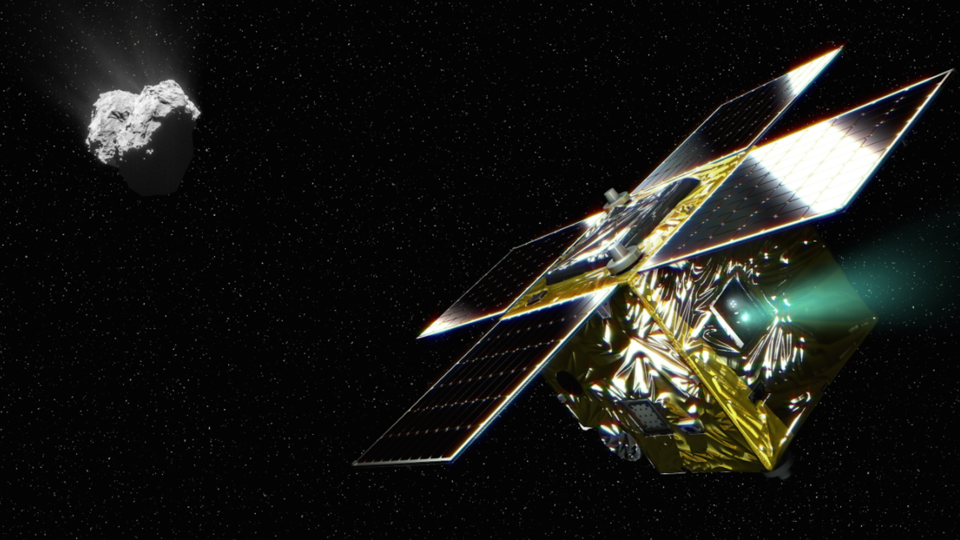Universe Update
Little Satellite, Big Mission

The future looks promising for micro spacecraft missions! New results from observations made by a team of astronomers from NAOJ, University of Michigan, Kyoto Sangyo University, Rikkyo University and the University of Tokyo (whew!) have given new insights into the structure of comet comas. In September 2015 the spacecraft PROCYON passed close enough to comet 67P (nicknamed Chury) to observe the comet’s coma. (Regular readers will recall that we’ve mentioned 67P quite a bit in our coverage of the European Space Agency’s Rosetta mission.) A paper released this week in The Astronomical Journal described these observations and what they could mean for future missions.
First off, what is a “micro spacecraft,” anyway? Perhaps images of tiny bug drones have popped into your head (if you’re like me…) or the computer chip-sized spacecraft that’s been proposed to go to Alpha Centauri? While “micro” indicates something small, in the case of micro spacecraft, small is certainly a relative term. The PROCYON spacecraft weighs in at about 65 kilograms (140 pounds), which may not seem very small, but given the amount of fuel and equipment needed for space exploration, this spacecraft still ranks as the smallest used for deep space exploration. For comparison, PROCYON is only about the size of a microwave, whereas another, slightly larger spacecraft, Akatsuki, weighs in at about 500 kilograms (1,100 pounds) and is roughly the size of a washer-dryer pair.
Originally, this mission wasn’t intended to study Chury at all. PROCYON was designed to study Earth’s geocorona, as well as the “geotail” of hydrogen gas left over from the Apollo 16 mission in 1972. PROCYON succeeded in those observations, but early in the mission, the possibility was discussed that the spacecraft could also observe Chury’s entire coma. Normally an observation like this might be made by the SWAN telescope on the SOHO spacecraft. However, by the time the comet had developed a significant coma, it also had moved into an area where there were many background stars and SWAN couldn’t distinguish the comet from stars. Given PROCYON’s high spatial resolution, it was able to pick up the slack and make an observation of the entire coma.
PROCYON was also able to build on observations from the aforementioned Rosetta mission. Rosetta was unable to observe Chury’s entire coma, since the spacecraft executed all of its observations once it was already inside of the coma itself. So PROCYON’s observations were the first time anyone was able to study the coma fully. Astronomers were able to come up with models for how much water might be released in the coma, and predictions were made by the Rosetta spacecraft, but this observation allowed the team of astronomers to test these models. Understanding the structure and activity of comet comas is very important for understanding how they formed early in our solar system’s history.
The success of PROCYON’s observation is promising for the future of these types of missions. There are plans for more micro spacecraft missions, and the team of astronomers working on the PROCYON mission hope that this result will become a model case for micro spacecraft observations. Micro spacecrafts are much cheaper and easier to construct and launch, and making more of them could provide a very helpful asset in assisting larger and more expensive missions, like Rosetta. Little spacecraft can do some big jobs!
Image: NAOJ/ESA/Go Miyazaki